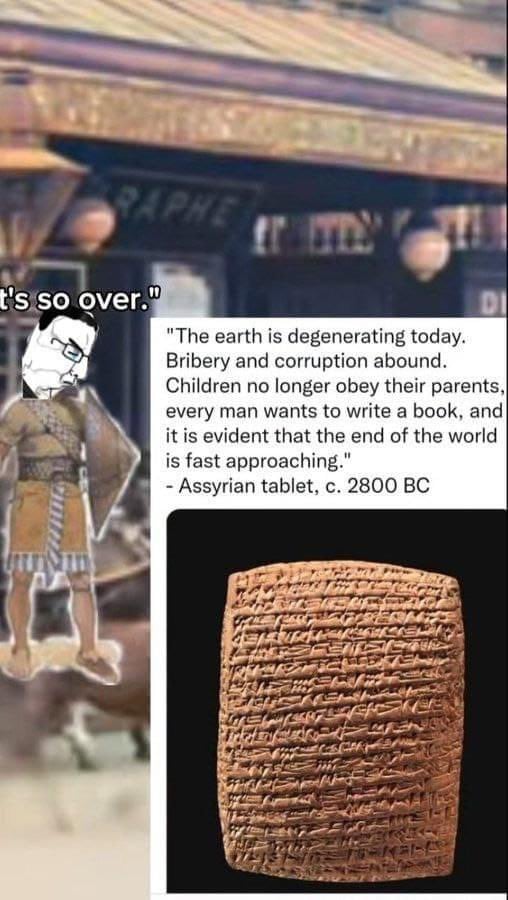this post was submitted on 07 Apr 2024
754 points (97.1% liked)
memes
10278 readers
2338 users here now
Community rules
1. Be civil
No trolling, bigotry or other insulting / annoying behaviour
2. No politics
This is non-politics community. For political memes please go to [email protected]
3. No recent reposts
Check for reposts when posting a meme, you can only repost after 1 month
4. No bots
No bots without the express approval of the mods or the admins
5. No Spam/Ads
No advertisements or spam. This is an instance rule and the only way to live.
Sister communities
- [email protected] : Star Trek memes, chat and shitposts
- [email protected] : Lemmy Shitposts, anything and everything goes.
- [email protected] : Linux themed memes
- [email protected] : for those who love comic stories.
founded 1 year ago
MODERATORS
you are viewing a single comment's thread
view the rest of the comments
view the rest of the comments

“This tablet is of a type used by the Assyrian merchants to track the income and expenses generated by caravan shipments. The cuneiform text, read from left to right, records not only the amount of silver invested in tin and textiles, but also the less commonly traded precious stone lapis lazuli, which was sourced from Afghanistan. In addition to investments in trade items, these shipments required various expenditures like clothing and wages for guides, as well as donkeys and their equipment and fodder. Donkeys became important trade items themselves and were often sold upon the caravan’s arrival in Anatolia after the arduous 6-8 week journey from Ashur. The tablet also records other fees, payments, and purchases, before calculating the total money owed to the prominent merchant Imdi-ilum who was active in the caravan trade between 1888 and 1876 B.C. Interestingly, the final balance recorded in the tablet, 1 mina and 50 shekels of silver, is slightly more than the actual total calculated from the figures provided (1 mina, 48 5/6 shekels). Such minor discrepancies are common in the Old Assyrian texts and several erasures on the text indicate the care with which the account was made.”
-The Met
Also this thing is from like the 19th cent. Which makes sense - 2800 BCE don’t bruh